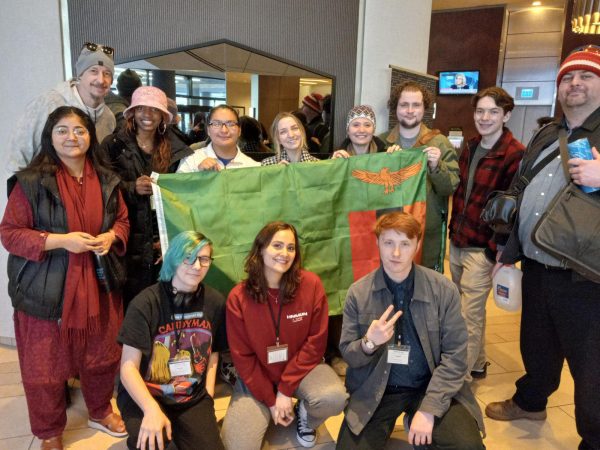Combating hunger in Vermont
Katie Green
Katie Green, a specialist with Hunger Free Vermont, talked about malnutrition and food security with about 50 Johnson State College students and faculty on Sept. 13.
Green kicked off the event with a timeline of the history of hunger in Vermont and the United States as a whole. “Prior to the 1930s, hunger was seen as the work of the local community,” she said. “It wasn’t until the World War II era that it was deemed a national security problem, after the military was forced to decline 40 percent of draftees because of malnutrition.”
The U.S. government responded by creating the “National School Lunch Program” in 1946 to help the armed forces and provide a stable agricultural market.
“Over the next 14 years, participation in the program grew 14 percent,” said Green. “But the country as a whole didn’t take hunger seriously until the documentary ‘Hunger in America’ was aired on television. The nation was shocked.”
With the general public finally aware of the crisis at hand, significant change and reform began to take place. Throughout the next few decades, many laws were passed to provide meals and food for children, families and senior citizens.
Although progress was being made, malnutrition was still far too prevalent by the mid 1990s, ushering in the era of welfare reform.
“Unfortunately, the 2008 recession reversed the positive trend in the fight against hunger,” Green said. “Participation in the Supplemental Nutrition Assistance Program (SNAP) reached 29 million U.S. citizens per month. In 2012, one out of every six U.S. citizens reported having problems buying enough food for a healthy and active lifestyle, and even though the economy has improved presently overall, the recovery has yet to reach many people.”
“In Vermont, one out of every eight households are considered food insecure, and there are five main reasons why,” said Green. “The reasons are lack of affordable housing, low wages, high unemployment, a decline in local and affordable grocery stores and not enough public transportation.
“The total cost of hunger for the state of Vermont is $335,700,000 annually and hunger is now identified as a health, education, workforce and job readiness problem,” she continued. “But what still needs to be done to eradicate it?”
According to Green, the most powerful tool we have at our disposal is advocacy. “Advocacy can create beneficial policies, and be a catalyst for positive change as well as a backbone organization to finally do something permanently about hunger,” she said.
“There are various programs within the state that have made a significant impact on malnutrition,” Green said. “‘3sqsVT,’ which stands for ‘three square meals Vermont,’ provides 87,000 citizens with a monthly benefit of $250 per household. In addition, studies show that children who grow up in a household that is supported by SNAP are 25 percent more likely to graduate high school than those who are without governmental assistance.”
Green concluded the informative demonstration with a final message: “History shows that we know the solution to hunger. The only question is political will.”








